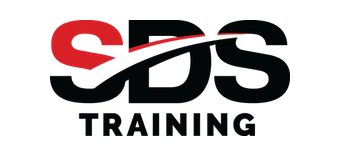
WELCOME TO YOUR SDS TRAINING January 2022 NEWSLETTER
We've been busy! Get your SDS training fix.
January updates, course funding, truck driving apprenticeships and Workplace Health and Safety ESafe updates!
FEBRUARY 2022 training dates
DON'T SEE WHAT YOU NEED GIVE US A CALL TODAY!

DO you need a high risk work licence?
How to know when you need high risk work licencing to operating a bridge or gantry crane

.png?width=398&name=Bridge%20Crane%20(1).png)
What is a bridge crane?
Bridge cranes are mounted inside of the building they operate in. This makes them great for warehouse type factories that are often crowded and where every inch of space is valuable.
The benefit by having a big crane mounted to the structure of your building is you can lift some really heavy objects with ease. Bridge cranes take the cake when it comes to heavy duty lifting.
What is a gantry crane?
Gantry cranes are typically on wheels or mounted to a track system . Because they’re not mounted to the structure of the building, they are much easier to disassemble and move elsewhere. The gantry cranes on wheels are especially mobile. They can be moved inside or outside whenever needed.
Gantry cranes are not as capable when it comes to lifting. They can still lift heavy loads, usually going up to 15 tons, but that is a far shot away from the 100 ton limit on some bridge cranes.
When is a high risk work licence required?
A high risk work licence is required to operate a bridge or gantry crane when it is controlled from a permanent cabin or control station on the crane or remotely controlled with more than three
powered operations eg; a single hoist with four powered operations or multiple hoists with four or more powered operations.
For more information on on High Risk Work Licencing for Bridge and Gantry Cranes Click Here.
Needing to obtain TLILIC0006 - Licence to operate a bridge and gantry crane? Want to find out more about how your course could be funded under CSQ? Call us today for more information! 1300 000 767

wORKPLACE HEALTH & SAFETY
ESAFE UPDATES
Fatal incident involving garbage truck
In November 2021, a mechanic died after being trapped in the back of a rear-loading garbage truck.
Early investigations indicate the man had climbed into the compacting section of the garbage truck to fix a problem when for reasons yet to be established he was trapped and suffered fatal injuries.
To continue reading click here.
Worker burned following chemical explosion
In November 2021, a worker suffered burns to his shoulders, knees and face following an explosion at a marine maintenance facility.
Early enquires indicate he was doing fibreglass repair work inside the hull of a boat using acetone. It appears a nearby heat gun has potentially ignited vapours generated by the acetone resulting in an explosion.
To continue reading click here.
Workplace fatalities
Queensland workplace traumatic injury fatalities decreased by 12 percent from 34 fatalities in 2015-16 to 30 in 2019-20, according to figures released this month.
The statistics, released by Safe Work Australia in its Work-related Traumatic Injury Fatalities, Australia 2020 report and Comparative Performance Monitoring report, reveal a national decrease over the same five-year period of five per cent, from 148 to 141.
The figures show that while the serious incident rates in Queensland increased five percent from 11.9 to 12.5 per 1000 workers, between 2014-15 and 2018-19, preliminary data for 2019-20 indicates a turnaround with a marginal decrease of one per cent over the year for Queensland, and a four percent increase nationally.
Queensland has already surpassed the national target of a 20 percent cut in worker fatalities due to injury. Some of the changes can be attributed to the impact of COVID-19 on attendance at the usual workplace, work hours and employment levels.
To continue reading click here.
HAZARD ALERT!!
WORKING IN HEAT DURING SUMMER
Working in the summer heat can be hazardous and poses a direct risk to a worker's health and safety.
The human body needs to maintain a body temperature of approximately 37 degrees Celsius, if our body gets too hot it can begin to work hard to keep cool and start to over heat. This can cause heat-related illness.
Some common effects of working in heat include:
• Heat rash
• Heat cramps
• Fainting
• Dehydration
• Heat stroke
• Burns
• Slips
• Reduced concentration
Safe Work Australia has recently (October 2021) updated its guidance material on how to mange the risk associated with working in the heat. The new guidance reflects changes made to the recommended first aid for heat stroke.
For more information or to view the new guidance material click the link below: https://www.safeworkaustralia.gov.au/resources-and-publications/guidance-materials/guide-managing-risks-working-heat
new trucking apprenticeship
prime minister ANNOUNCES trucking apprenticeships to keep driving australia's economy
On the 20th December the Morrison Government has announced new national apprenticeship, TLI31216 Certificate III Driving Operations. The industry in conjunction with states and territories develop a truck driving apprenticeship for the first time, following endorsement of a new framework by federal, state and territory Skills Minister.
The apprenticeship will now be considered by states and territories to be added to their training programs, with existing Commonwealth funding for the apprenticeships and training flowing as soon as they do.
Prime Minister Scott Morrison said a new national trucking apprenticeship was a critical step to address a potential shortfall in the trucking workforce while meeting supply chain challenges.
“Securing Australia’s economic recovery relies on the thousands of men and women driving trucks around our country every single day,” the Prime Minister said.
“Our trucking sector drives our economy and there couldn’t be a more important job than getting food on the table to millions of families or delivering COVID-19 vaccines to doctors, hospitals and pharmacies across Australia.
“Right now we have a record number of trade apprentices in place with over 220,000 Australians training for new job opportunities, which is in stark contrast to Labor who cut $1.2 billion to employer incentives and lost 110,000 places.”
“The new trucking apprenticeships come at a time when the Government is delivering record amounts of support to apprentices and trainees, which has seen hundreds of thousands of Australians upskilling or reskilling thanks to JobTrainer, TAFE funding and apprenticeship funding,” Minister Robert said.
“In delivering an additional pathway to get skilled and keeping our economy going, today’s announcement is further confirmation the Morrison Government is the best friend an apprentice has ever had.
Assistant Minister for Road Safety and Freight Transport Scott Buchholz said the new apprentice pathway would help lift the professionalism of the transport industry and attract new workers.
“The transport industry is the lifeblood that keeps Australia moving and supplied, Australia stops without our hard-working truck drivers, it is as simple as that,” Assistant Minister Buchholz said.
“Truck driving is about more than just changing gears and unloading, by providing a national driver training framework, our future truck drivers will have an advanced competency across the profession, such as load constraints, transporting dangerous goods and pre-departure inspection.
“This is a new approach to ensuring our transport industry has the workforce of the future and provides young Australians with the opportunity to have a career, not just a job – in a rewarding industry.
“The Commonwealth led the nation on this and we will continue to work with State and Territories Skills Ministers to ensure they step up to roll out this new and exciting apprenticeship pathway for the next generation of professional, Australian truck drivers.”
The Transport and Logistics Industry Reference Committee finalised updates to the TLI31216 Certificate III Driving Operations and the nationally agreed enhancements have been recommended for delivery as an apprenticeship, subject to States and Territories agreement.
Discounted training!
CSQ & CERTIFICATE III GUARANTEE FUNDING - 2022
CSQ FUNDING:
CSQ is an independent, not-for-profit, industry-funded body supporting employers, workers, apprentices, trainees and career seekers in the building and construction industry.
CSQ supports construction workers by subsidising training for tradies, workers and small and large businesses to help them build their careers and capability, promoting careers in construction and supporting pathways into the industry, working with industry partners to help keep talented people in the industry and providing thought leadership to the industry around skills, training, industry trends, major projects and employment data.
For more information on CSQ Funding and available courses visit:
https://sdstraining.edu.au/funding/csq-funding-2/
OR

CERTIFICATe III GUARANTEE FUNDING:
The Certificate 3 Guarantee supports eligible individuals to complete their first post-school certificate III qualification and increase their skills to move into employment, re-enter the workforce or advance their career.
It also supports school students to access training and Queensland’s Year 12 graduates to transition to employment by providing fee-free training in high priority qualifications.
For more information on CSQ and available courses visit:
https://sdstraining.edu.au/funding/certificate-3-guarantee-funding/
OR
https://desbt.qld.gov.au/training/training-careers/incentives/certificate3







